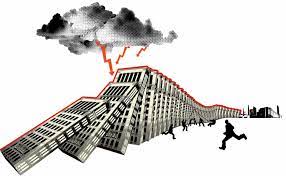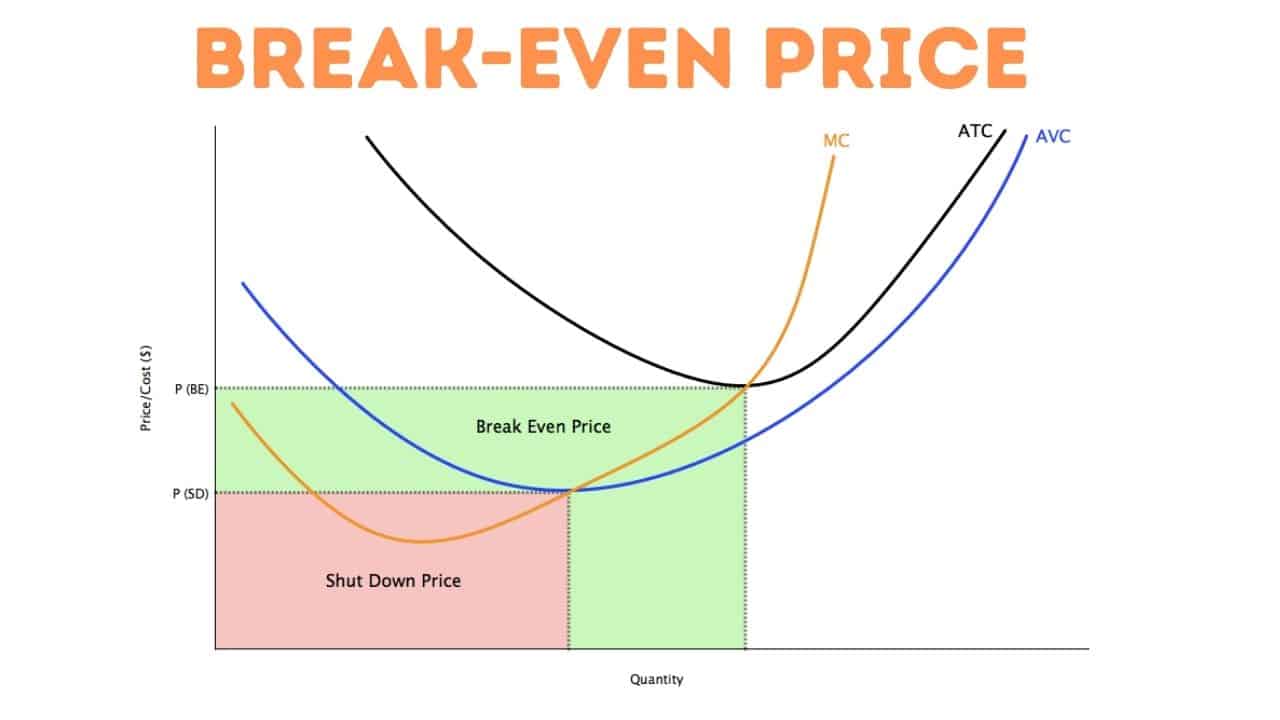An economic collapse is a rare occurrence that is not always associated with the regular economic cycle. It can happen at any time during the cycle, causing stages of contraction and recession. An economy can go through a number of stages, according to economic theory. A complete economic cycle involves movement from a trough to an expansion, a peak, a contraction that moves the economy back toward the trough, and so on.
What Is Economic Collapse?
A period of national or regional economic disintegration is referred to as an “economic collapse,” and it can last anywhere from a few years to several decades. During times of economic trouble, a country is defined by things like social unrest, bankruptcies, less trade, unstable currency, and a breakdown of law and order.
Adapting to the Economic Collapse
Through fiscal and monetary policy, national governments have a strong reason to try to stop or lessen the severity of an economic collapse, even though it can and still does happen. Economic collapse is frequently combated through a combination of fiscal and intervention measures. For example, banks could be forced to close to stop people from taking money out, new controls on capital could be put in place, billions of dollars could be put into the economy through the financial system, and whole currencies could be revalued or even replaced. Despite government attempts, some economic crises lead to the total overthrow of the government, which was both the cause of and the solution to the crisis.
Causes of Economic Collapse
Some of the reasons why the economy collapsed include the following:
#1. Hyperinflation
When the government prints too much money and lets inflationary pressure build up in the economy, the prices of goods and services slowly go up. In an effort to control a downturn in the economy, governments turn to create an excess of money and credit. Hyperinflation happens when the government can’t keep prices from going up and has to raise interest rates to slow the rate of inflation.
#2. Stagflation
Stagflation is a term used to describe a situation in which inflation is rising and the economy is growing slowly. Policymakers face a problem as a result of this economic predicament because the actions are taken to combat the inflationary surge risk pushing unemployment rates to uncharacteristically high levels. The impacts of stagflation on the economy could extend for years or even decades.
#3. Crash of the Stock Market
A stock market crash happens when investors lose faith in the market and there is a sharp decrease in the values of all the equities that are traded on the stock market. A stock market crash results in a bear market (when prices drop 20% or more from highs to new lows) and depletes enterprises of money.
When stock prices are growing over an extended period of time, price-earnings ratios are higher than typical over the long term, and market players are using margin debt excessively, crashes happen.
Consequences of Economic Collapse
An economic downturn can result in “scarring” in any of these conditions, which is long-lasting harm to people’s financial positions and the economy as a whole. Some of the information on how recessions might cause long-term harm is detailed in the parts that follow.
#1. Economic Loss
Recessions cause more people to lose their jobs, lower wages and incomes, and a wider range of lost opportunities. The present recession is likely to have long-lasting repercussions on economic opportunity, private capital investments, and education.
#2. Education
Numerous scholars have noticed that education, or “human capital,” is a key factor in economic growth. For instance, human capital has “played the primary role in propelling America’s edge in twentieth-century economic growth,” according to Delong, Golden, and Katz (2002). Therefore, conditions that cause the nation’s young to complete fewer years of education will have a significant impact for years to come.
#3. Opportunity
There is no denying that economic downturns and high unemployment rates result in fewer
opportunities for individuals and families to prosper. Individuals and the larger economy suffer losses as a result of job loss, income declines, and rising poverty.
#4. Job Loss
The unemployment rate has climbed throughout the current recession, rising from 4.9% in December 2007 to 9.7% in August of this year. With nearly 1 in 6 workers being unemployed or underemployed, there are currently about 15 million unemployed people, which is double the level at the beginning of the recession. The number of employees who have been unemployed for more than six months, or about 5 million people, is at its highest level since 1948.
Evidently, losing one’s employment causes hardships for the majority of people and families. Even after starting a new work, the income loss may continue for years (often at a lower salary).
How Close are we to Total Economic Collapse
At the start of the fourth quarter, that wasn’t obvious. To restrain demand and quell the worst, the Fed quickly raised interest rates. decades, fueling worries about a downturn. inflation. Nevertheless, consumer spending and the job market appeared to be relatively resilient, according to economic data reported up until mid-October. According to some experts, the US may avoid a recession in the ensuing quarters. Others disputed this. Bloomberg Economics says that there will be a recession in the US economy in the second half of 2019. One of the first big institutions to predict a recession was Deutsche Bank AG, whose economists predicted one would start in the middle of 2023.
What Does it Mean When an Economy Collapses?
When the economy of a country, region, or territory has collapsed, it usually happens after a period of crisis. Depending on how severe the conditions are, an economic collapse can start at the beginning of a severe economic contraction, depression, or recession and extend for any number of years.
What was the Worst Economic Collapse in History?
#1. The 1929–1939 Great Depression
The worst financial and economic catastrophe of the 20th century was this one. Many people think that the 1929 Wall Street crisis was what started the Great Depression and that the U.S. government’s poor policy choices later made it worse. At the height of the crisis in 1933, the unemployment rate in the United States was about 25%.
#2. The 1973 OPEC Oil Price Shock
This crisis began when members of OPEC (Organization of Petroleum Exporting Countries), most Arab countries, agreed to retaliate against the US for supplying Israel with weapons during the Fourth Arab-Israeli War. After OPEC members put in place an oil embargo, the United States and its allies could no longer get oil from other countries. This led to major energy shortages, a sharp rise in oil prices, and a financial crisis in the US and many other wealthy countries. Because of the economic crisis that followed, there was both very high inflation and economic stagnation at the same time. This was because of the rise in energy prices. It took a few years for output to recover and inflation to go back to where it was before the crisis. Economists call this time period “stagflation,” which is a combination of stagnation and inflation.
#3. The 1997 Asian Crisis
This crisis began in Thailand in 1997, and it quickly spread to the rest of East Asia and its economic partners. Because of speculative capital flows from industrialized countries, the economies of Thailand, Indonesia, Malaysia, Singapore, Hong Kong, and South Korea, which are all known as the “Asian tigers,” had too much credit and too much debt.
A lack of foreign currency resources forced the Thai government to end its long-standing fixed exchange rate against the US dollar in July 1997. Fears of a global financial crisis started to spread as panic erupted in the markets and investors became apprehensive of the impending bankruptcy of East Asian nations. Years passed before everything could get back to normal.
What Countries have Economic Collapse?
#1. Russia
The Russian economy is still being battered by dropping oil prices, skyrocketing inflation, international sanctions brought on by the conflict with Ukraine, and wary foreign investors. The rupee value is declining. In January, inflation increased by 15%. The most recent baseline forecast from the World Bank, made in December 2014, predicted that Russia’s real GDP will decline by 0.7% in 2015. The Composite Leading Indicators have fallen precipitously, which is not surprising.
#2. Greece
Since the 2008 financial crisis, no country in the Eurozone has suffered more than Greece. According to the Levy Economics Institute at Bard College, since then there have been over 1 million job losses, a 22% decline in employment, a 30% decrease in household income in just three years, and investment and consumption levels that are close to zero. By the third quarter of 2014, the federal government’s debt-to-GDP ratio had reached 176%.
#3. Ukraine
The industrial Crimean peninsula was annexed by Russia in March 2014, plunging Ukraine into a severe economic crisis. The chief central banker of the nation told reporters that although the IMF had predicted a 6.5% decrease in GDP for 2014, the real decline was likely more. In 2014, its currency, the hryvnia, had the worst performance in the entire globe. Because of the sharp falls, the central bank briefly outlawed currency trading in February 2015 before rapidly reversing its decision. In an effort to curb hyperinflation, the central bank increased its benchmark interest rate to 30% in March 2015.
Has the US State Economy Ever Deflated?
The Great Recession, which officially ran from December 2007 to June 2009, was the most recent deflationary episode in American history. Oil prices in particular fell during this time, and experts were concerned that deflation would result in a protracted recession, growing unemployment, and an additional burden on the American economy. The actual deflation was less severe than some economists had anticipated. Although the precise cause of this is unknown, some economists have hypothesized that the pressure placed on businesses by the exceptionally high cost of borrowing in late 2008 and 2009 prevented them from lowering their prices.
Which US State has the Weakest Economy?
#1. Alaska
Historically, Alaska’s abundant oil deposits have been the main driver of the state’s economy. Unfortunately, Alaska was ranked last on our list.
Alaska’s labor market was the weakest in the nation, with the highest December 2017 unemployment rate of 7.3%, despite the state having the highest Q3 2017 GDP per capita of $70,574 and the highest average weekly wage of $1,012.09 among the states and DC.
With a 0.7% decrease in employment, the state was just one of two that shed nonfarm payroll jobs between December 2016 and December 2017.
#2. Louisiana
On a number of our metrics, Louisiana performed poorly.
In particular, Louisiana’s nonfarm payroll job growth between December 2016 and December 2017 was 0.3%, which was the fourth-worst among the states and DC, and its Q3 2017 GDP growth of 1.1%, which was the second-worst among the states and DC.
#3. North Mexico
The Los Alamos National Laboratory, where the atomic bomb was initially created during World War II, is located in New Mexico.
The average weekly wage in New Mexico in December 2017 was $723.07, well below the $884.93 average for the states and the District of Columbia.
How Long Does a US Recession Usually Last?
The average length of a recession since 1854, according to the NBER, has been 17 months. Since World War II, on the other hand, recessions have been much shorter. In the United States, the average economic downturn lasts about ten months.
Conclusion
Recessions may and often do leave a lasting impression. Therefore, we ought to view the price of battling recessions as a long-term investment.
The loss of investment, R&D, education, and skills, in general, is much more significant in a world where competition is fierce because it can undermine American competitive advantages abroad. To reduce the long-term damage as much as possible, the ship needs to be righted as quickly and completely as possible.
Related Articles
- RECESSION: What It Means, Examples & What to Do During Recession
- HOUSING MARKET RECESSION: Impacts of Recession In 2023
- How To Trade Forex During Recession?
- Best Time To Buy a House In 2023
- https://businessyield.com/bs-investment/what-is-good-roi/
- https://businessyield.com/marketing/grassroots-marketing/






